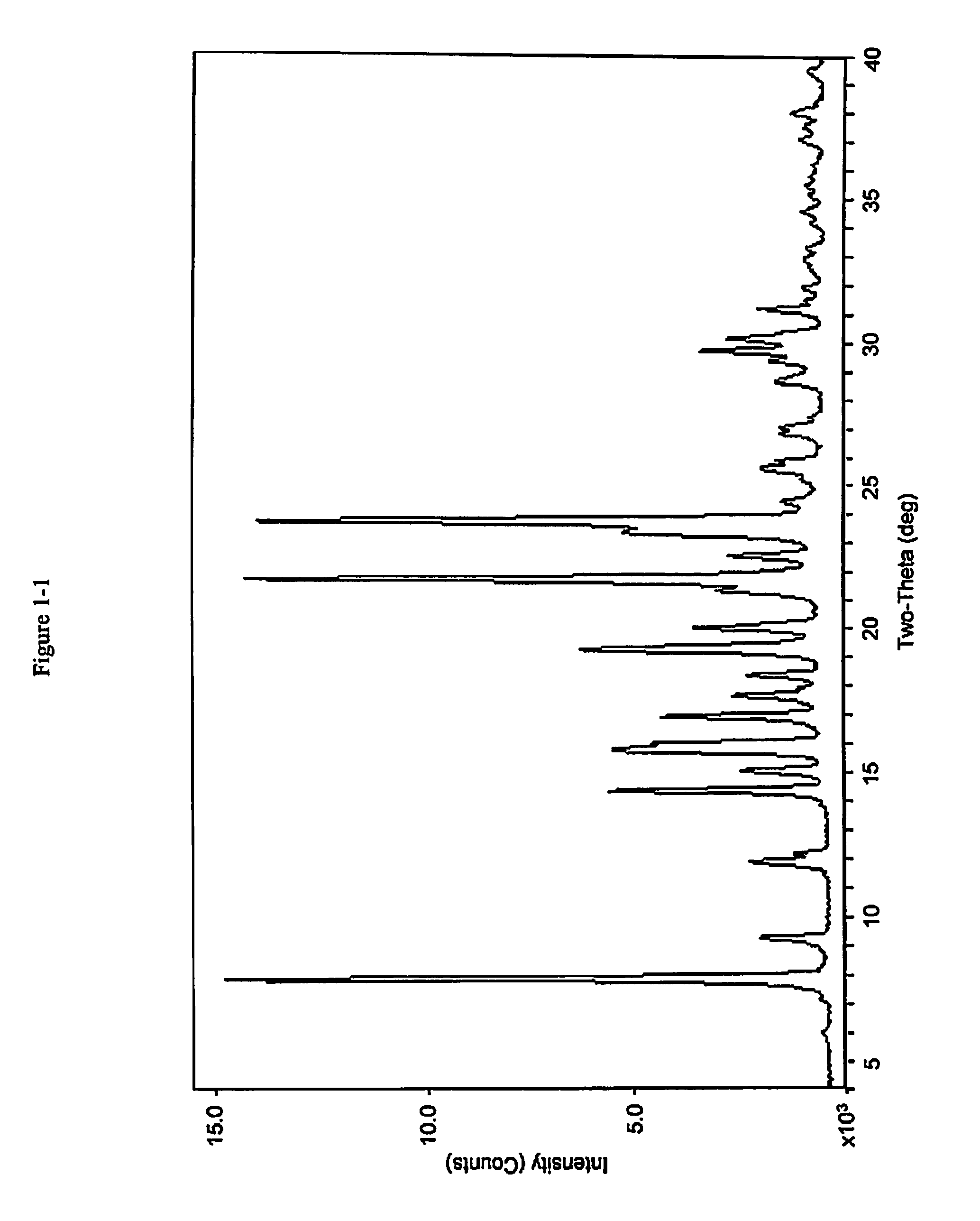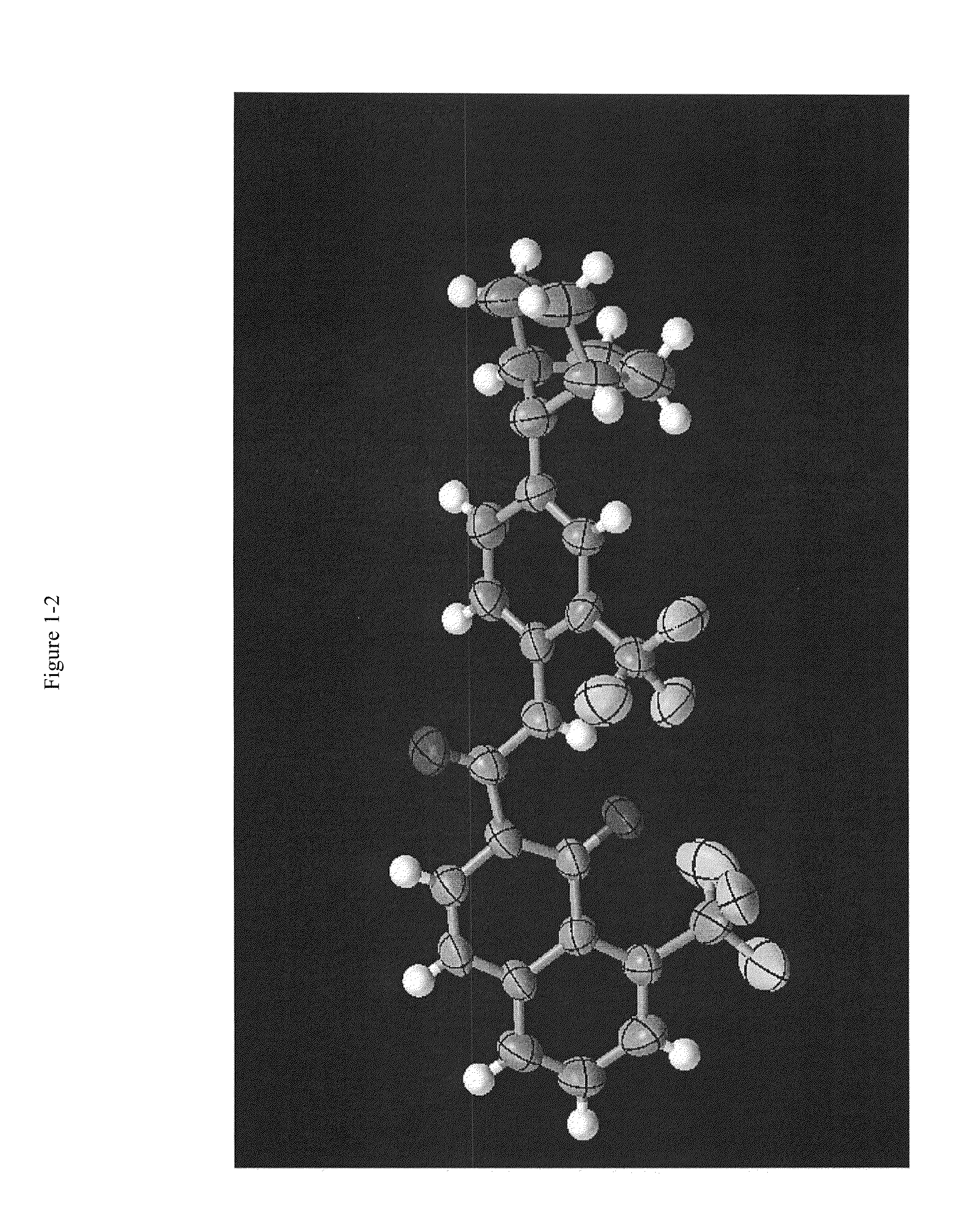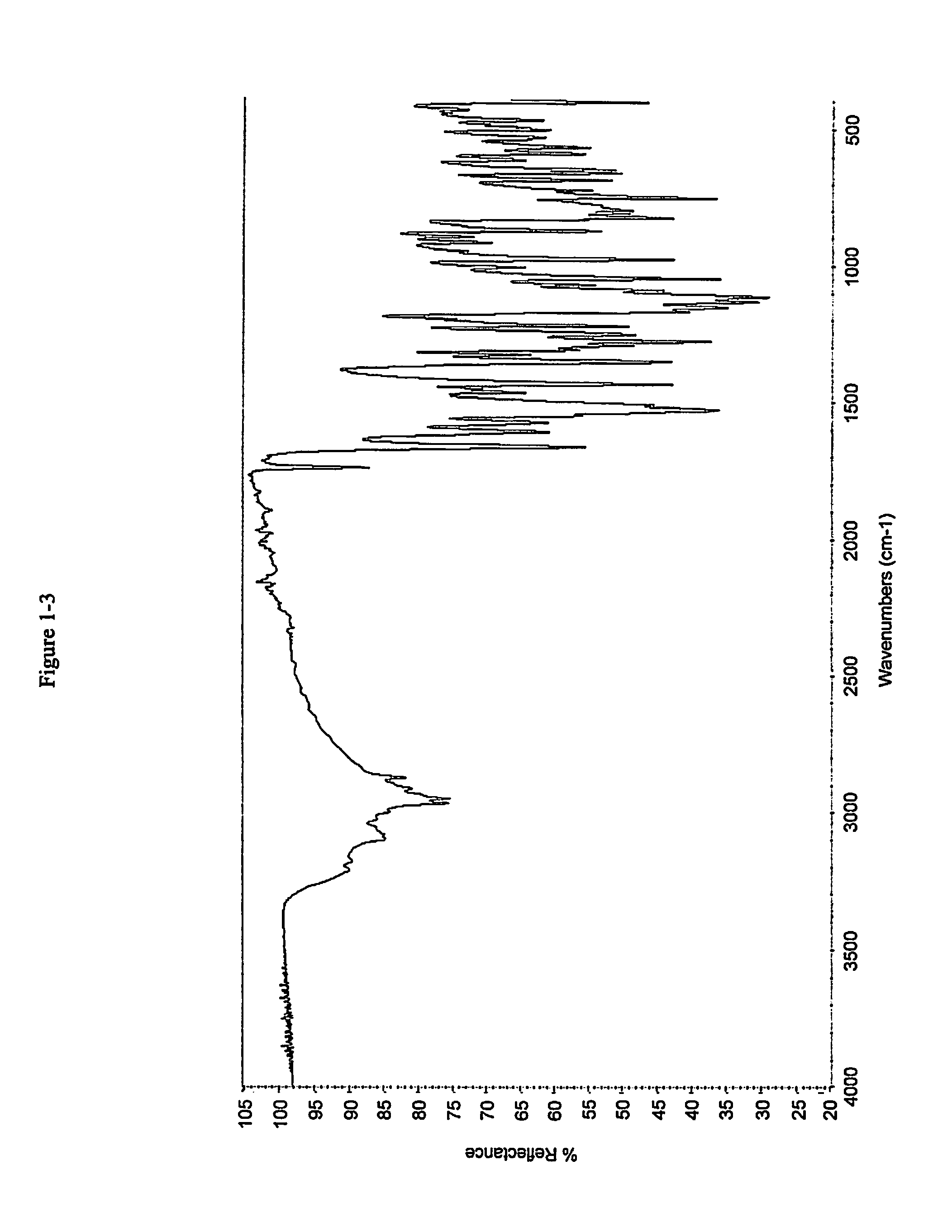Pharmaceutical compositions and administrations thereof
a technology of compositions and pharmaceuticals, applied in the field of pharmaceutical compositions, can solve the problems of imbalance in ion and fluid transport, no cure, and individuals with two copies of the cf associated gene suffering from the debilitating and fatal effects of
- Summary
- Abstract
- Description
- Claims
- Application Information
AI Technical Summary
Benefits of technology
Problems solved by technology
Method used
Image
Examples
example 1a
Diethyl 2-((2-chloro-5-(trifluoromethyl)phenylamino)methylene)malonate (14)
[0222]2-Chloro-5-(trifluoromethyl)aniline 12 (200 g, 1.023 mol), diethyl 2-(ethoxymethylene)malonate 13 (276 g, 1.3 mol) and toluene (100 mL) were combined under a nitrogen atmosphere in a three-neck, 1-L round bottom flask equipped with Dean-Stark condenser. The solution was heated with stirring to 140° C. and the temperature was maintained for 4 h. The reaction mixture was cooled to 70° C. and hexane (600 mL) was slowly added. The resulting slurry was stirred and allowed to warm to room temperature. The solid was collected by filtration, washed with 10% ethyl acetate in hexane (2×400 mL) and then dried under vacuum to provide a white solid (350 g, 94% yield) as the desired condensation product diethyl 2-((2-chloro-5-(trifluoromethyl)phenylamino)methylene)malonate 14. 1H NMR (400 MHz, DMSO-d6) δ 11.28 (d, J=13.0 Hz, 1H), 8.63 (d, J=13.0 Hz, 1H), 8.10 (s, 1H), 7.80 (d, J=8.3 Hz, 1H), 7.50 (dd, J=1.5, 8.4 Hz, ...
example 1b
Ethyl 8-chloro-4-oxo-5-(trifluoromethyl)-1,4-dihydroquinoline-3-carboxylate (15)
Method 1
[0223]A 3-neck, 1-L flask was charged with Dowtherm® (200 mL, 8 mL / g), which was degassed at 200° C. for 1 h. The solvent was heated to 260° C. and charged in portions over 10 min with diethyl 2-((2-chloro-5-(trifluoromethyl)phenylamino)methylene)malonate 14 (25 g, 0.07 mol). The resulting mixture was stirred at 260° C. for 6.5 hours (h) and the resulting ethanol byproduct removed by distillation. The mixture was allowed to slowly cool to 80° C. Hexane (150 mL) was slowly added over 30 minutes (min), followed by an additional 200 mL of hexane added in one portion. The slurry was stirred until it had reached room temperature. The solid was filtered, washed with hexane (3×150 mL), and then dried under vacuum to provide ethyl 8-chloro-4-oxo-5-(trifluoromethyl)-1,4-dihydroquinoline-3-carboxylate 15 as a tan solid (13.9 g, 65% yield). 1HNMR (400 MHz, DMSO-d6) δ 11.91 (s, 1H), 8.39 (s, 1H), 8.06 (d, J=...
example 1c
Ethyl 4-oxo-5-(trifluoromethyl)-1H-quinoline-3-carboxylate (16)
[0225]A 3-neck, 5-L flask was charged with of ethyl 8-chloro-4-oxo-5-(trifluoromethyl)-1,4-dihydroquinoline-3-carboxylate 15 (100 g, 0.3 mol), ethanol (1250 mL, 12.5 mL / g) and triethylamine (220 mL, 1.6 mol). The vessel was then charged with 10 g of 10% Pd / C (50% wet) at 5° C. The reaction was stirred vigorously under hydrogen atmosphere for 20 h at 5° C., after which time the reaction mixture was concentrated to a volume of approximately 150 mL. The product, ethyl 4-oxo-5-(trifluoromethyl)-1H-quinoline-3-carboxylate 16, as a slurry with Pd / C, was taken directly into the next step.
PUM
| Property | Measurement | Unit |
|---|---|---|
| temperature | aaaaa | aaaaa |
| temperature | aaaaa | aaaaa |
| volume | aaaaa | aaaaa |
Abstract
Description
Claims
Application Information
 Login to View More
Login to View More - R&D
- Intellectual Property
- Life Sciences
- Materials
- Tech Scout
- Unparalleled Data Quality
- Higher Quality Content
- 60% Fewer Hallucinations
Browse by: Latest US Patents, China's latest patents, Technical Efficacy Thesaurus, Application Domain, Technology Topic, Popular Technical Reports.
© 2025 PatSnap. All rights reserved.Legal|Privacy policy|Modern Slavery Act Transparency Statement|Sitemap|About US| Contact US: help@patsnap.com



